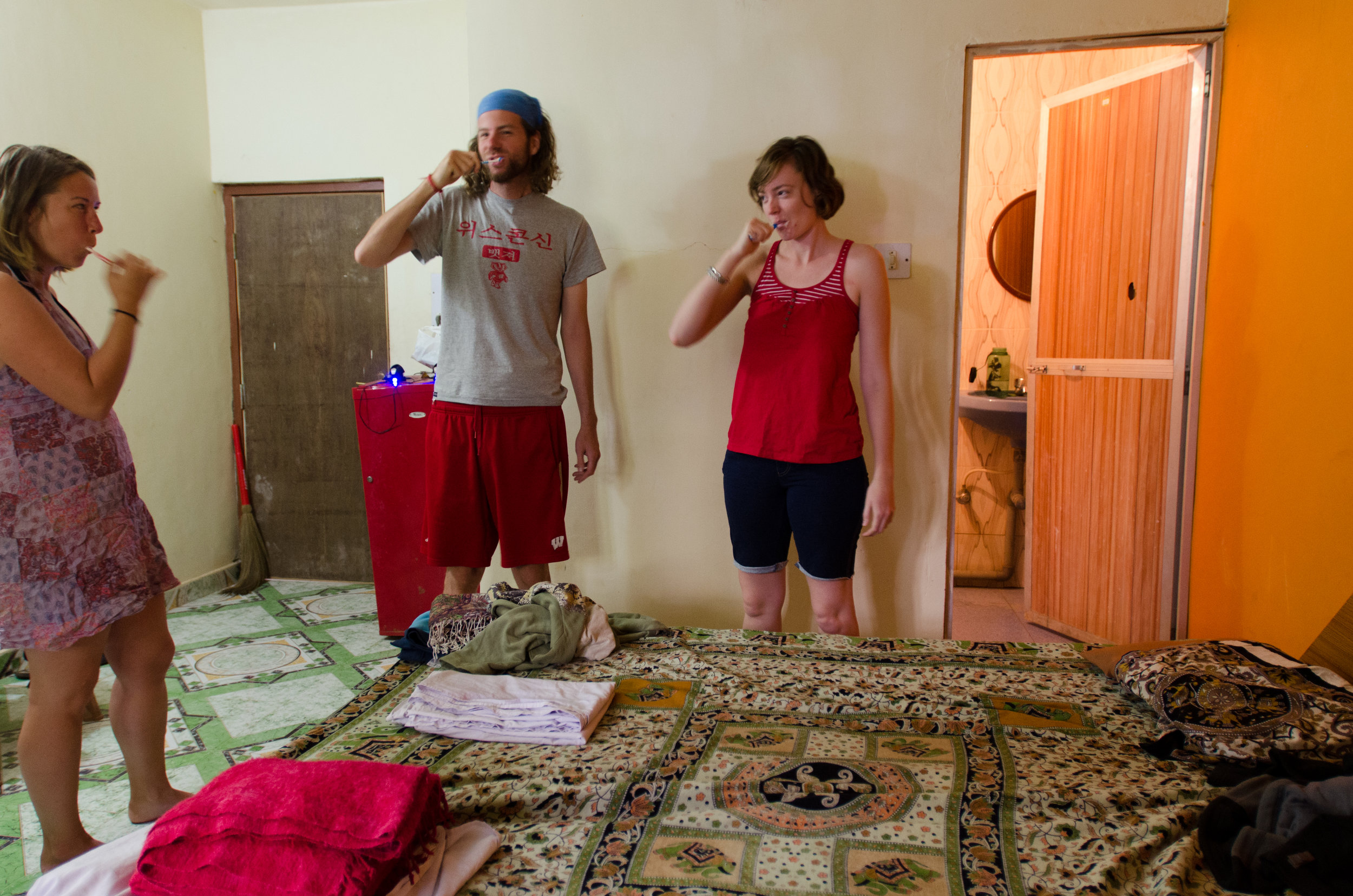Old Goa: Church of St. Francis of Assisi, The Basilica of Born Jesus, which holds the remains of St. Francis Xavier, and St. Augustine’s tower. These are just a few of what Old Goa has to offer, and what we saw when we took a break from the beach to do some sightseeing in the old Portugese town. Again, I was expecting something different, more of an old town atmosphere than an area that was seemingly limited to the different churches of the past, only some of them still being used today. As much as I enjoy walking through different temples and trying to pick up details of different religions, it felt very comfortable being able to walk through a couple of Catholic churches, and then climb the ruins of another. I also appreciated the collision of religions, displayed by the ropes of marigolds (Hindu practice) draped over an altar outside of the Basilica of Born Jesus.
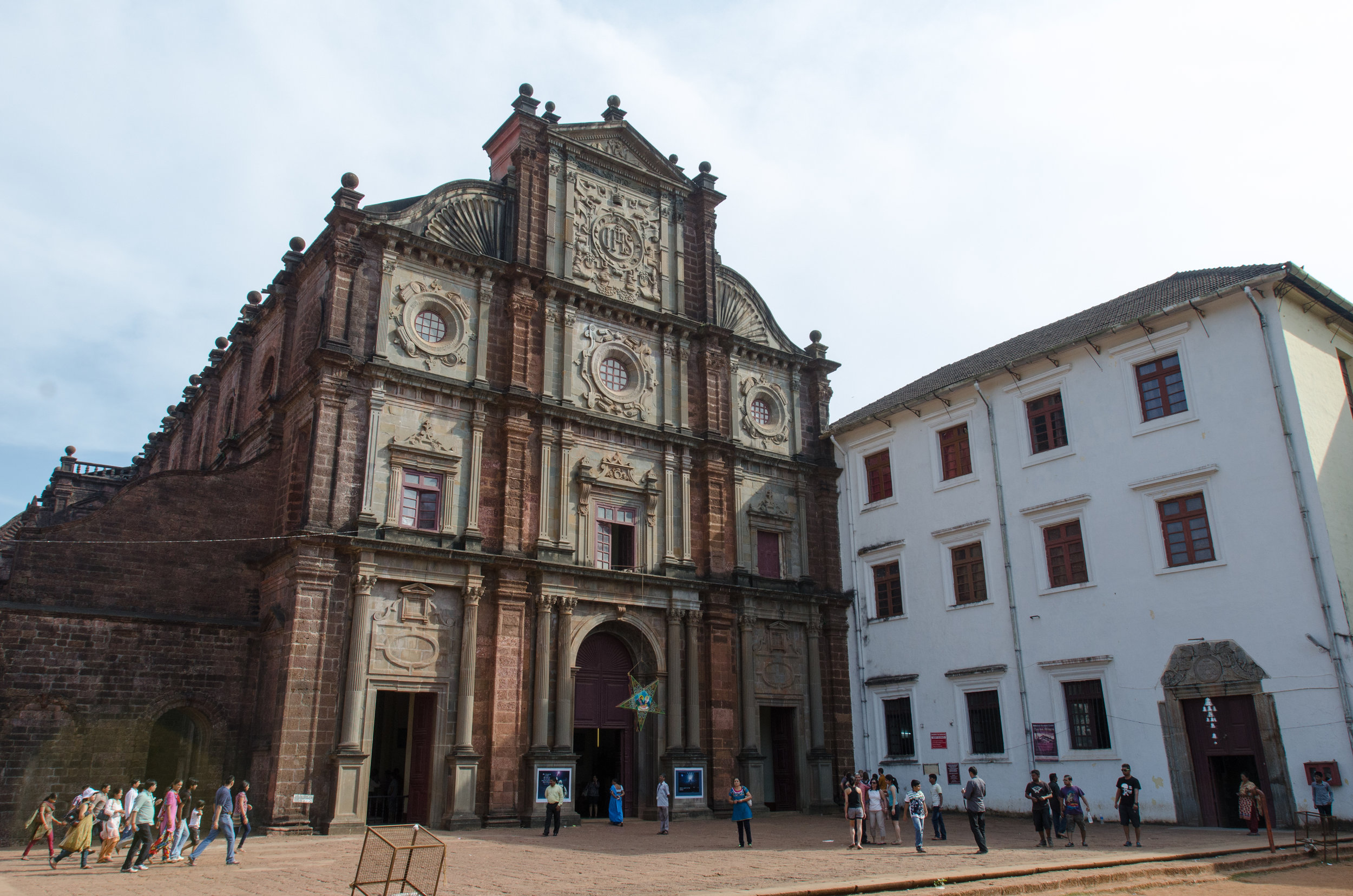
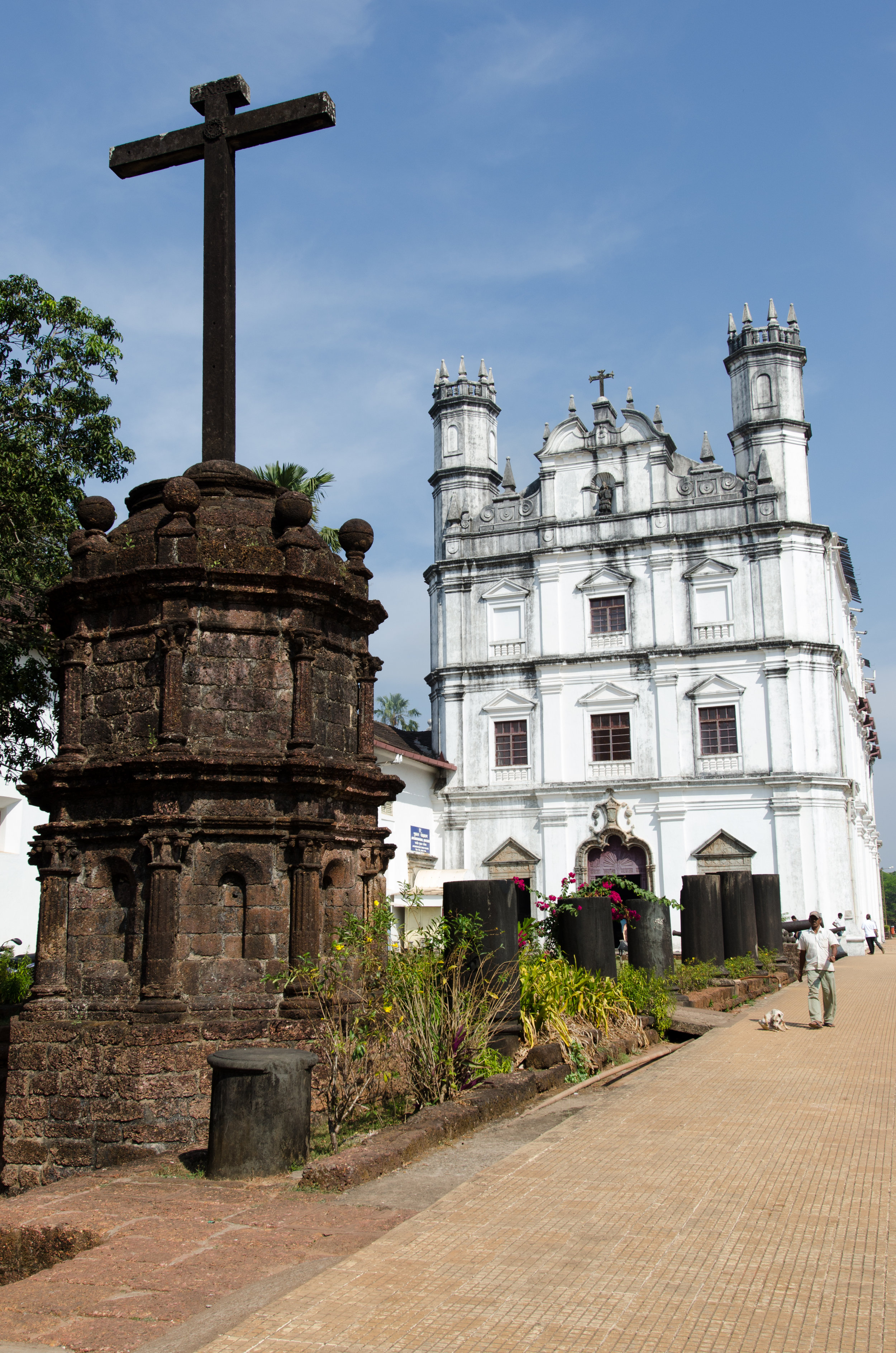
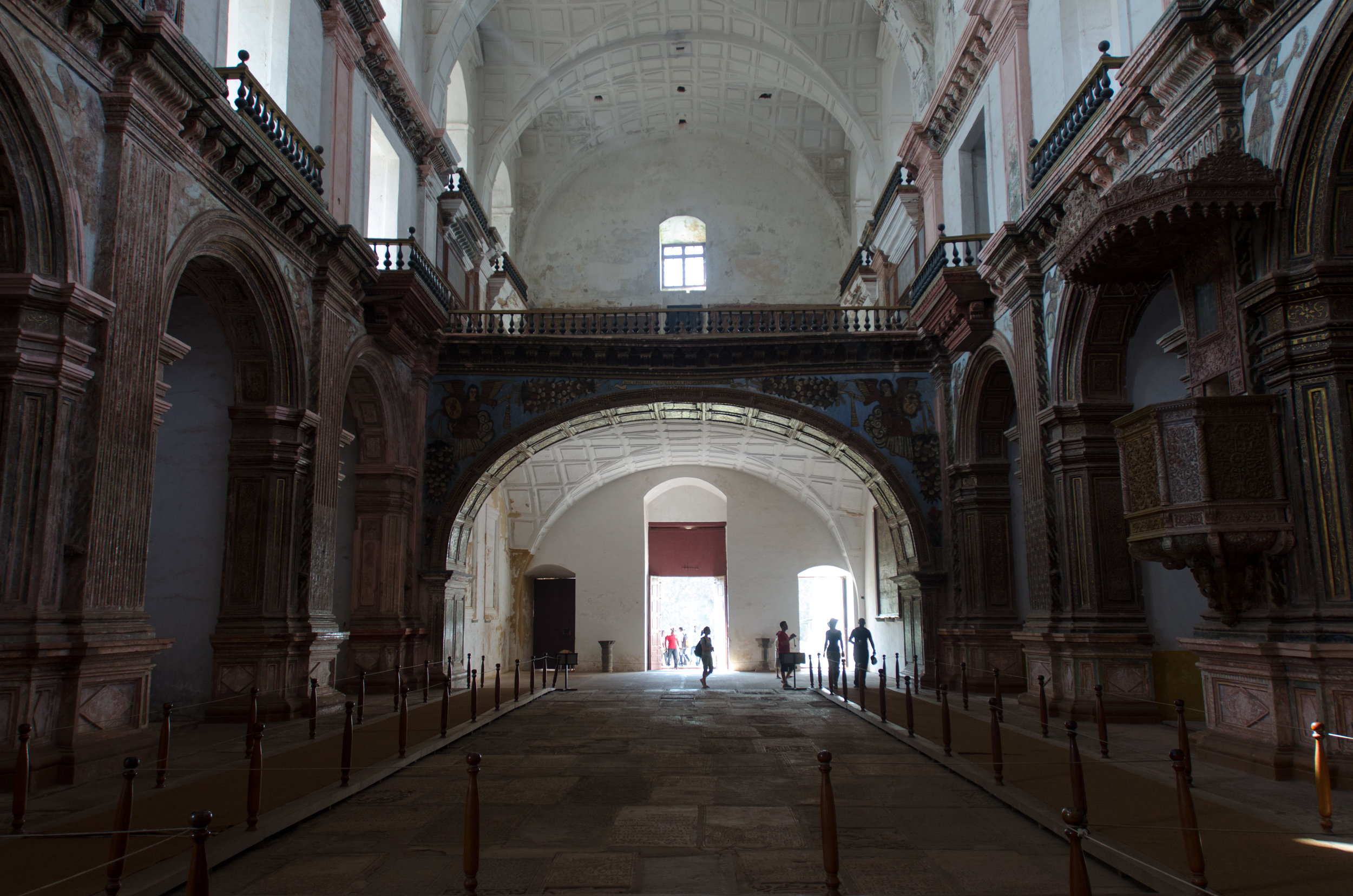
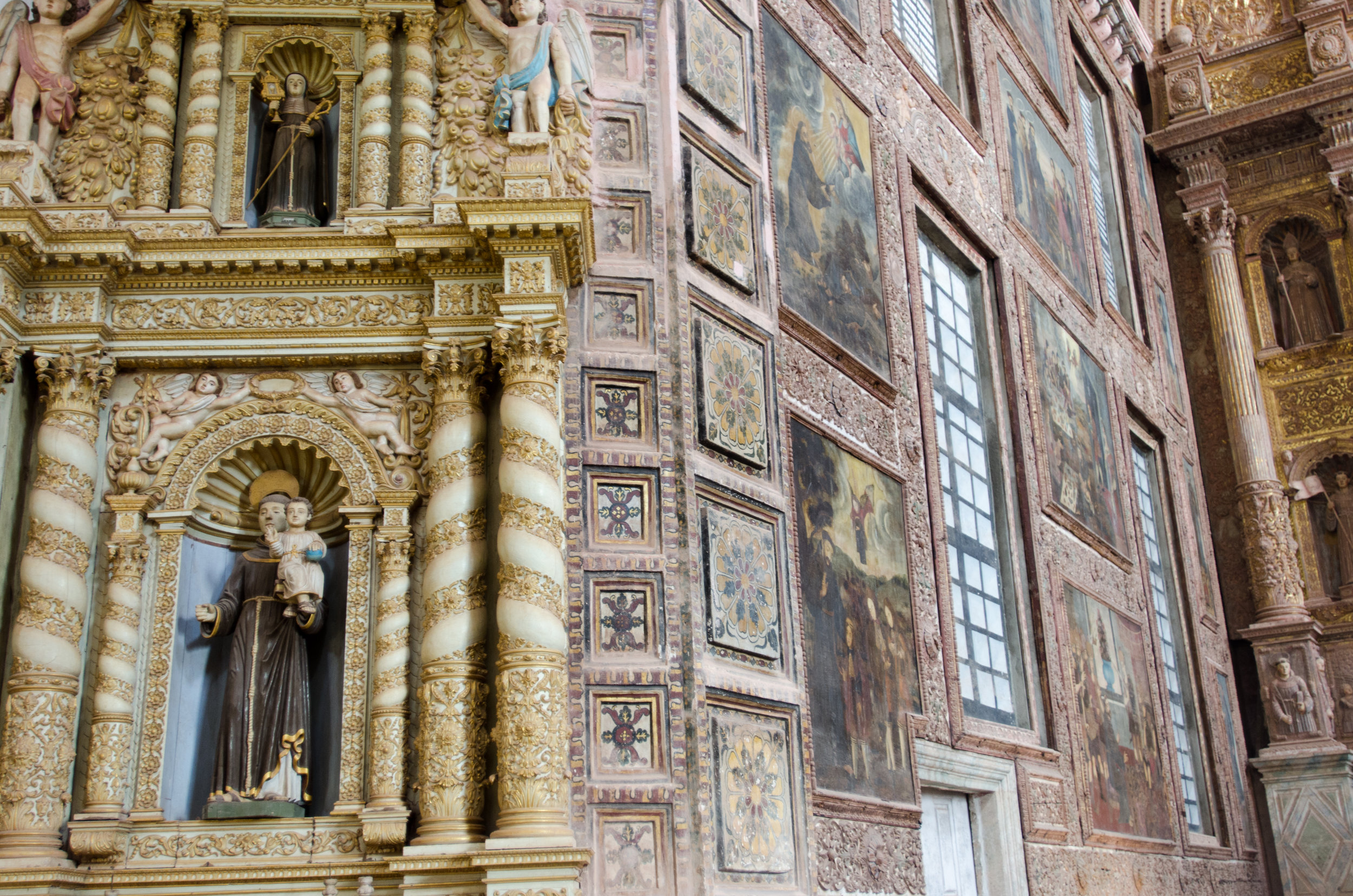
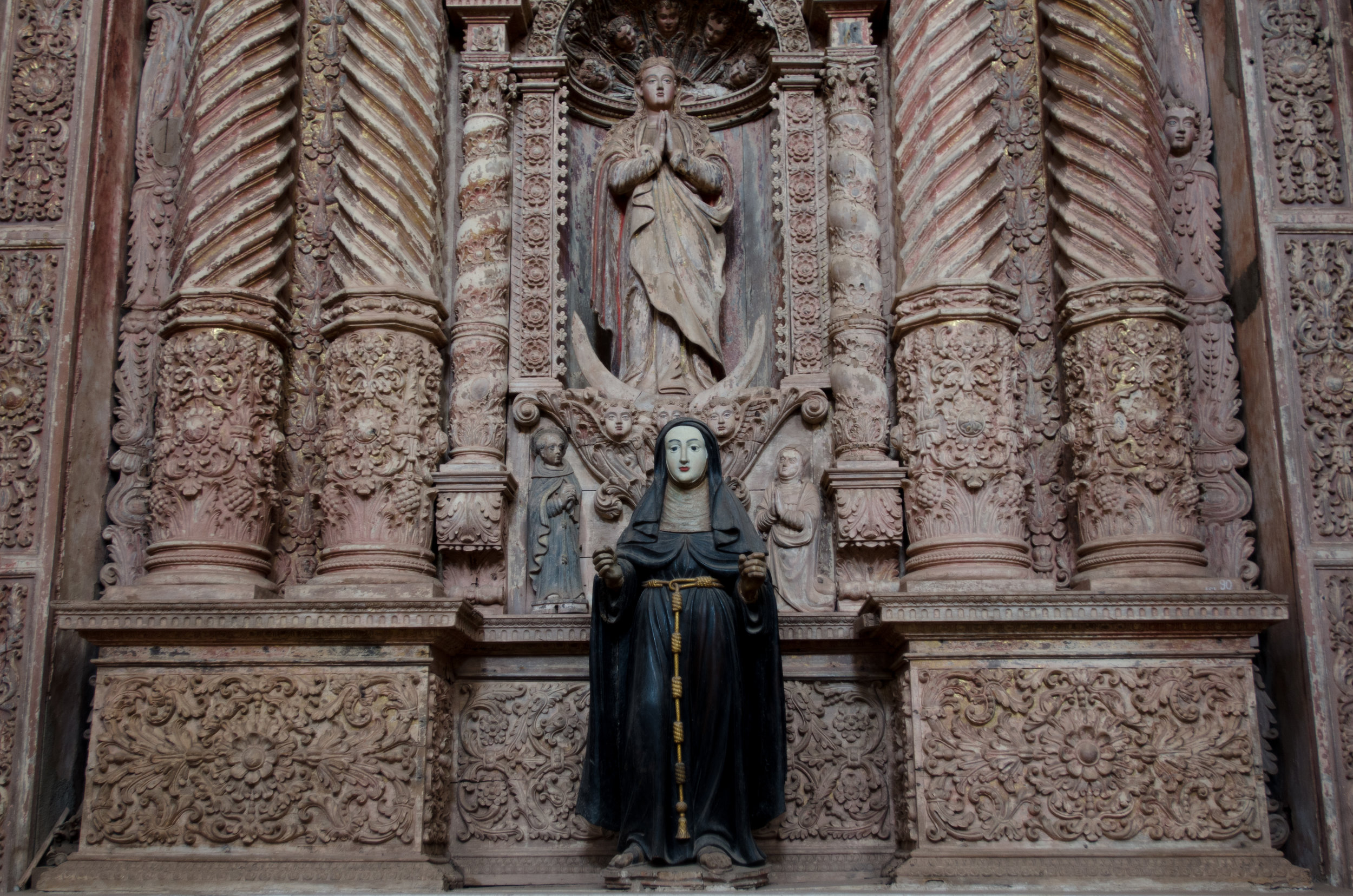

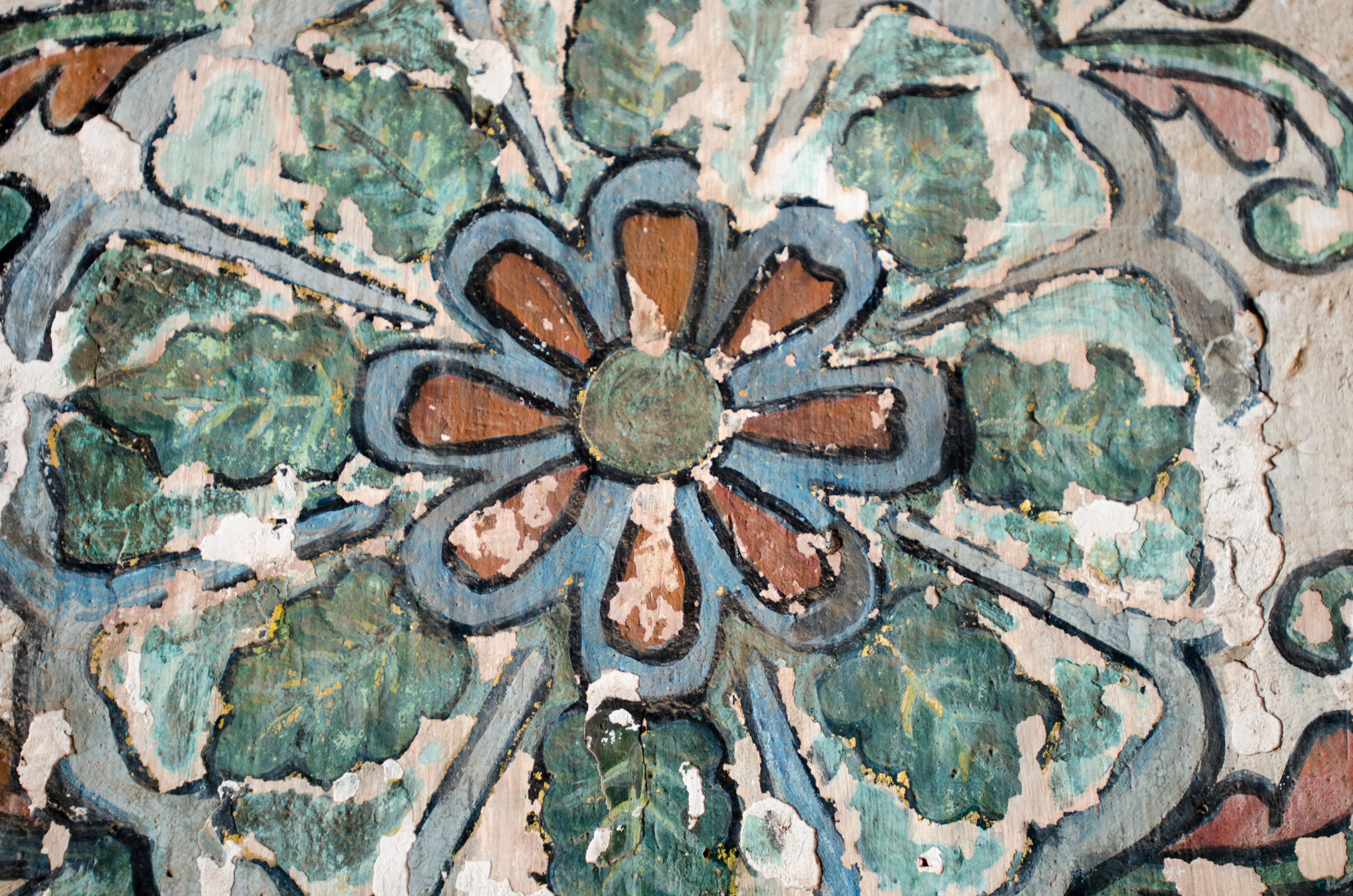

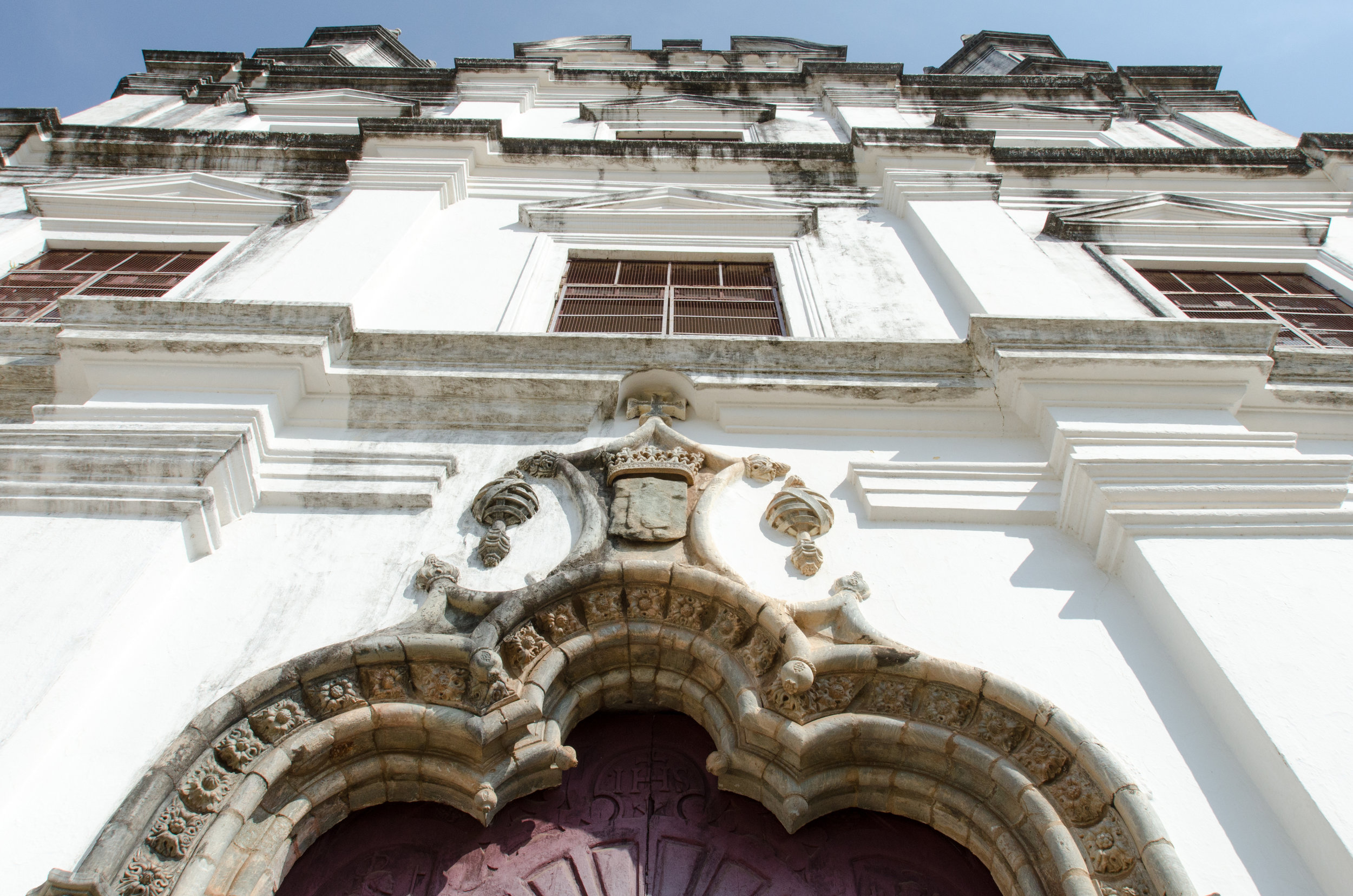
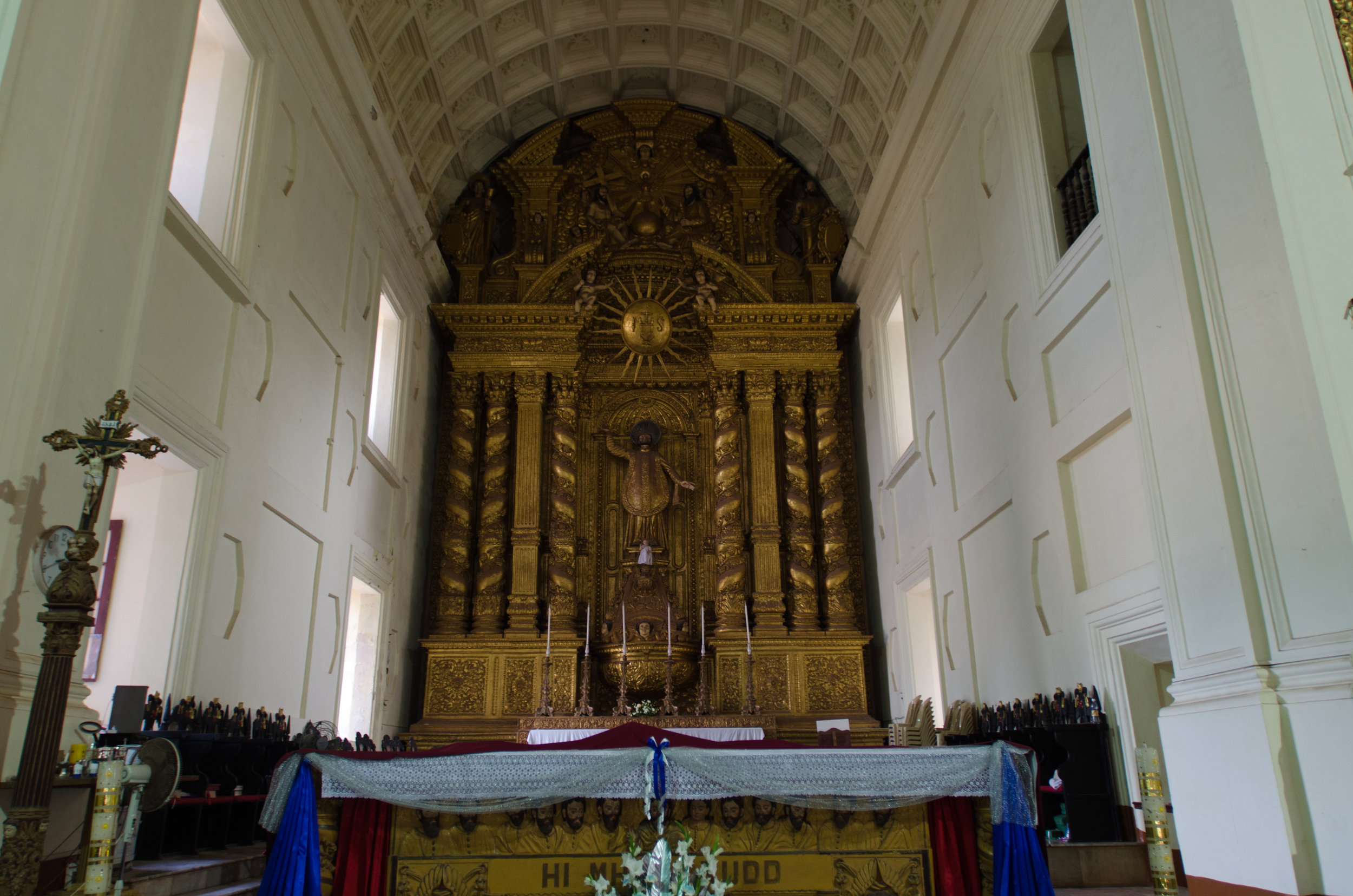
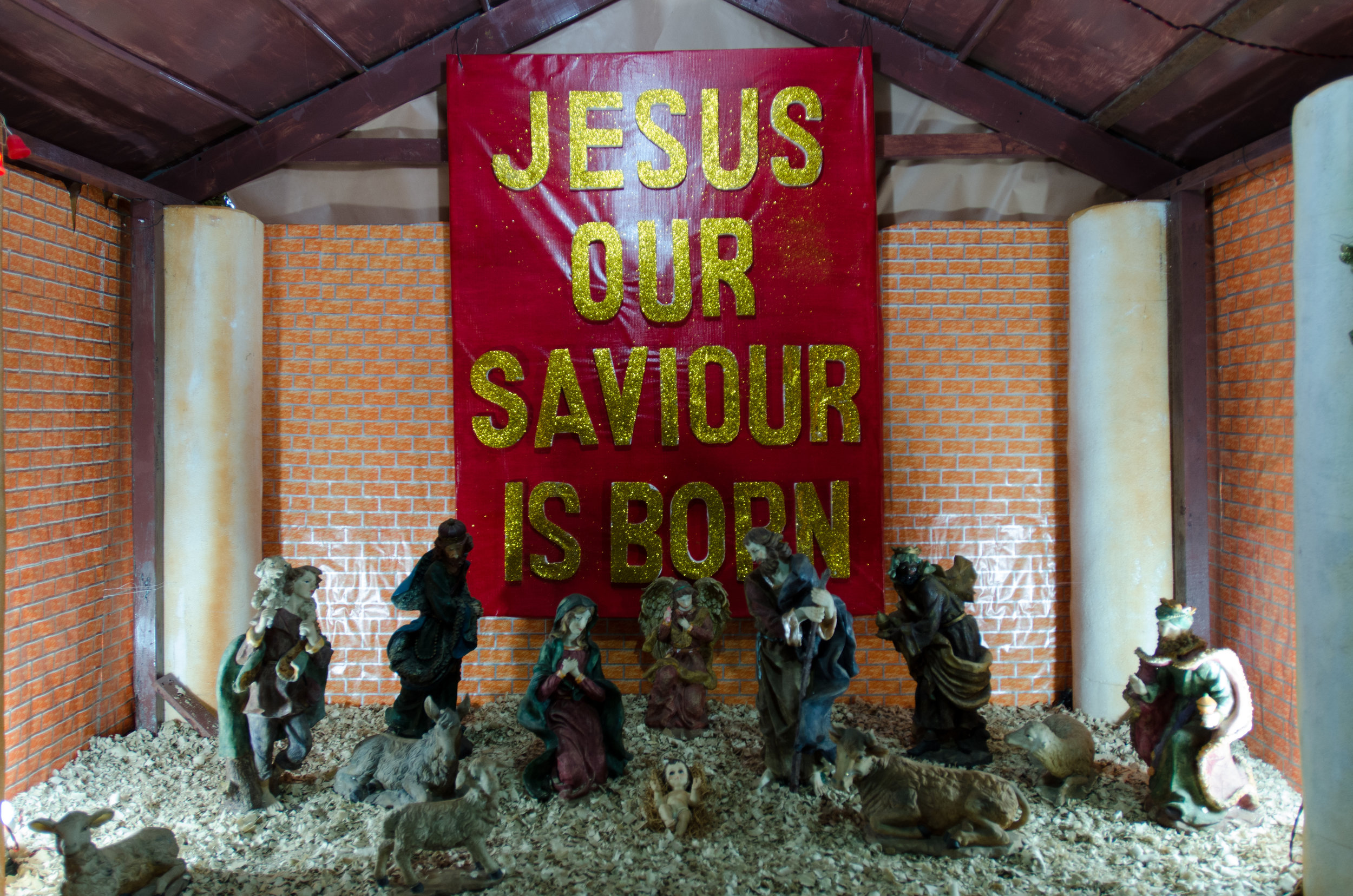
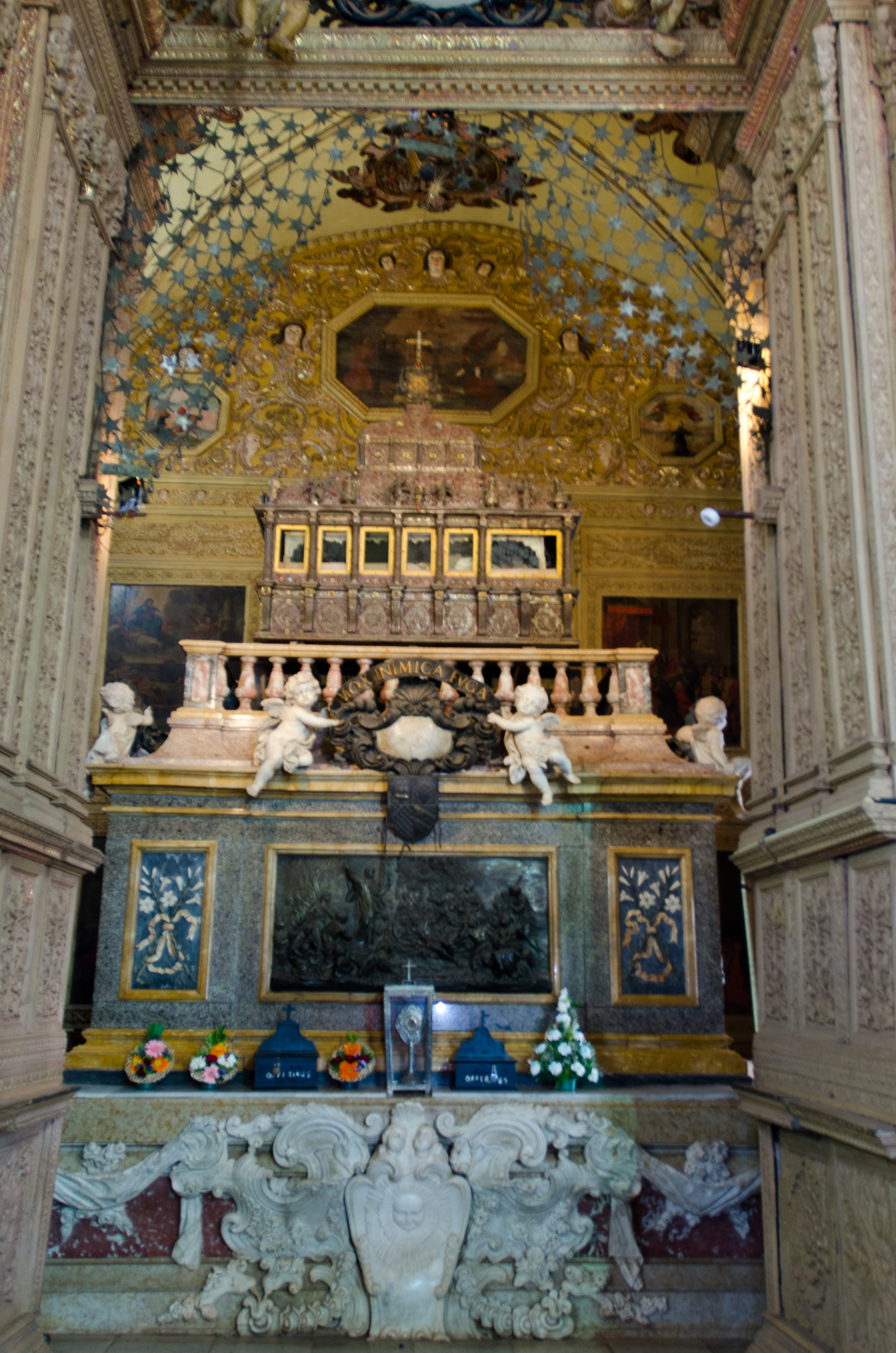
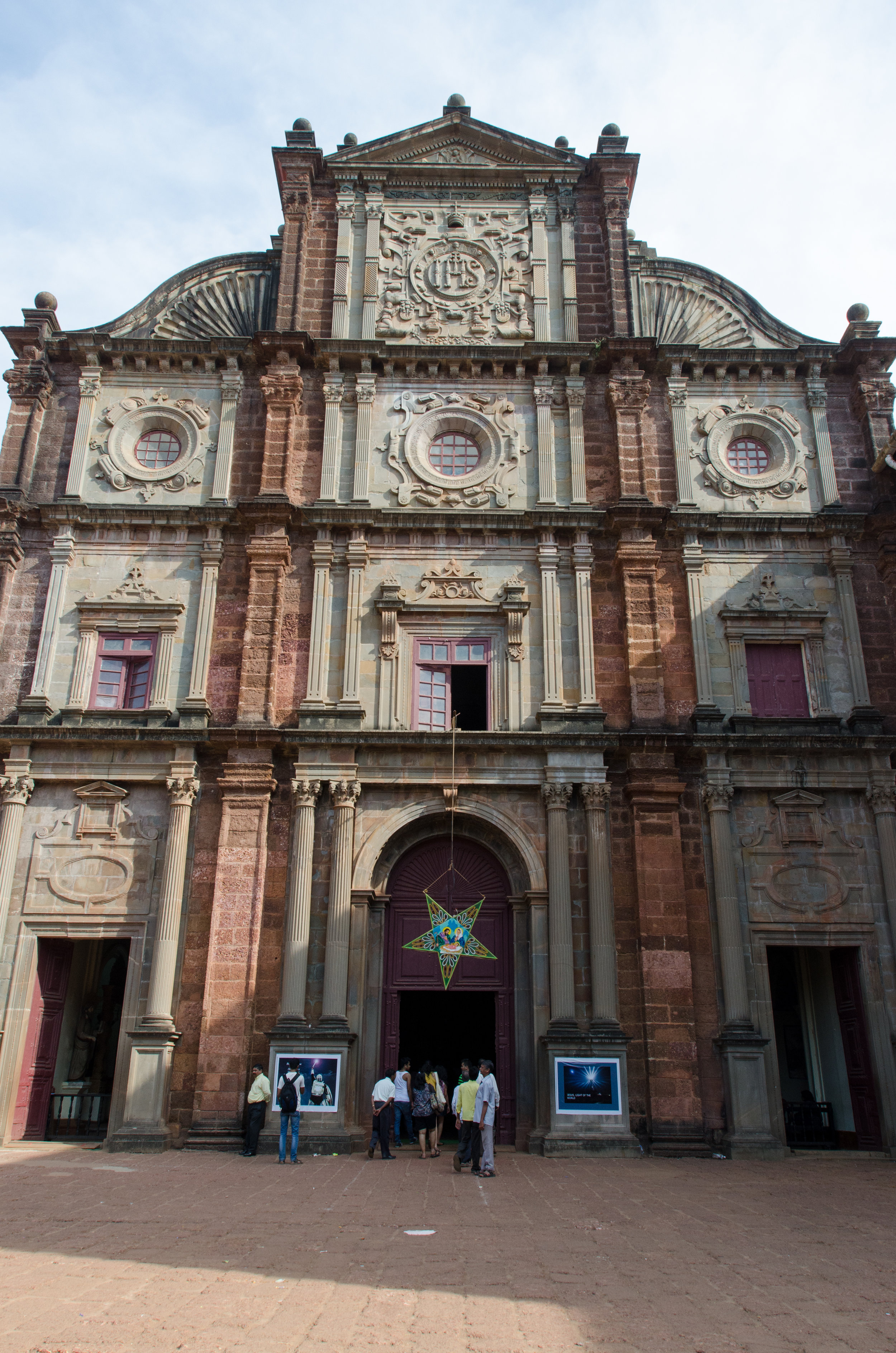
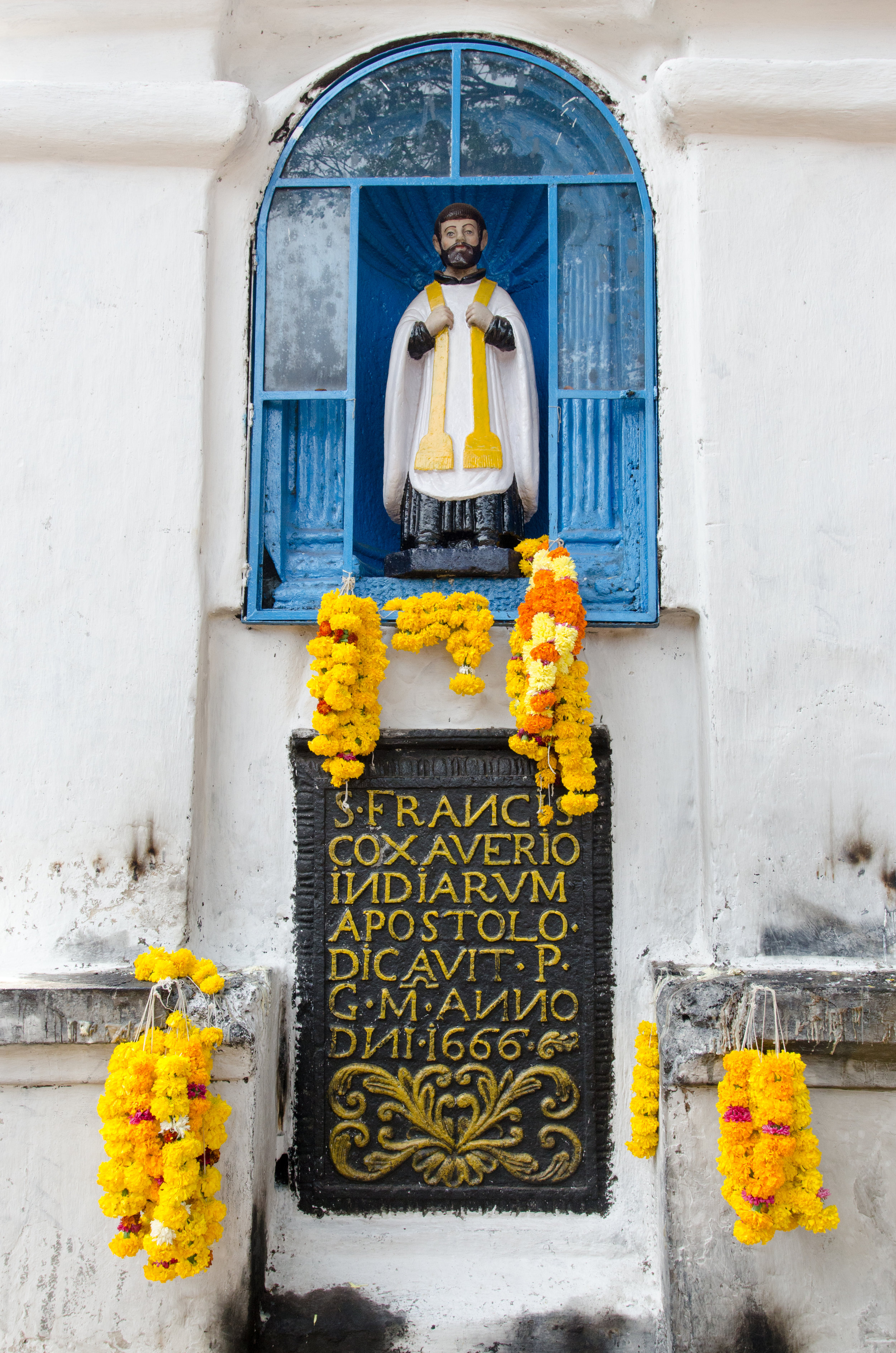
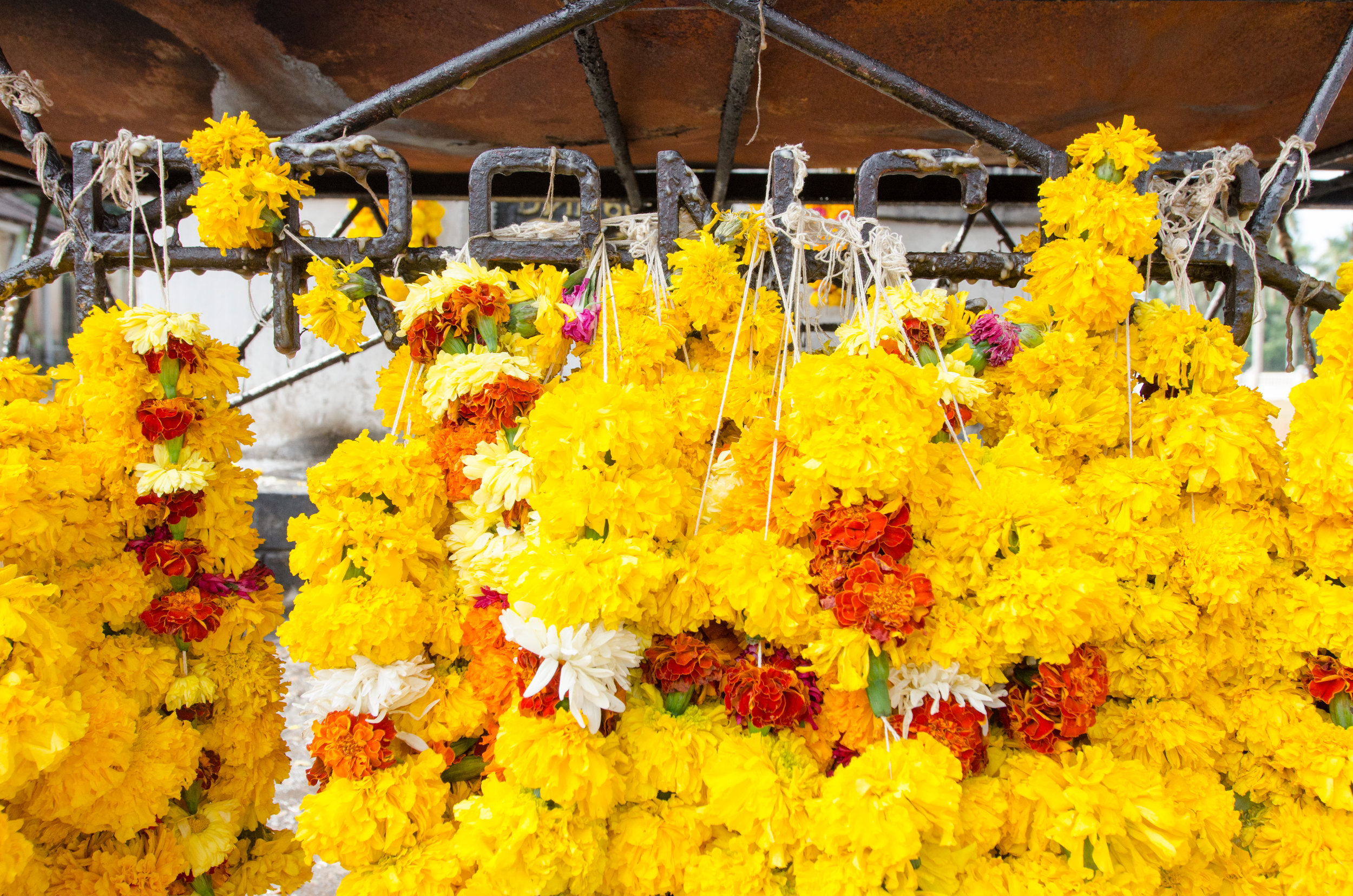
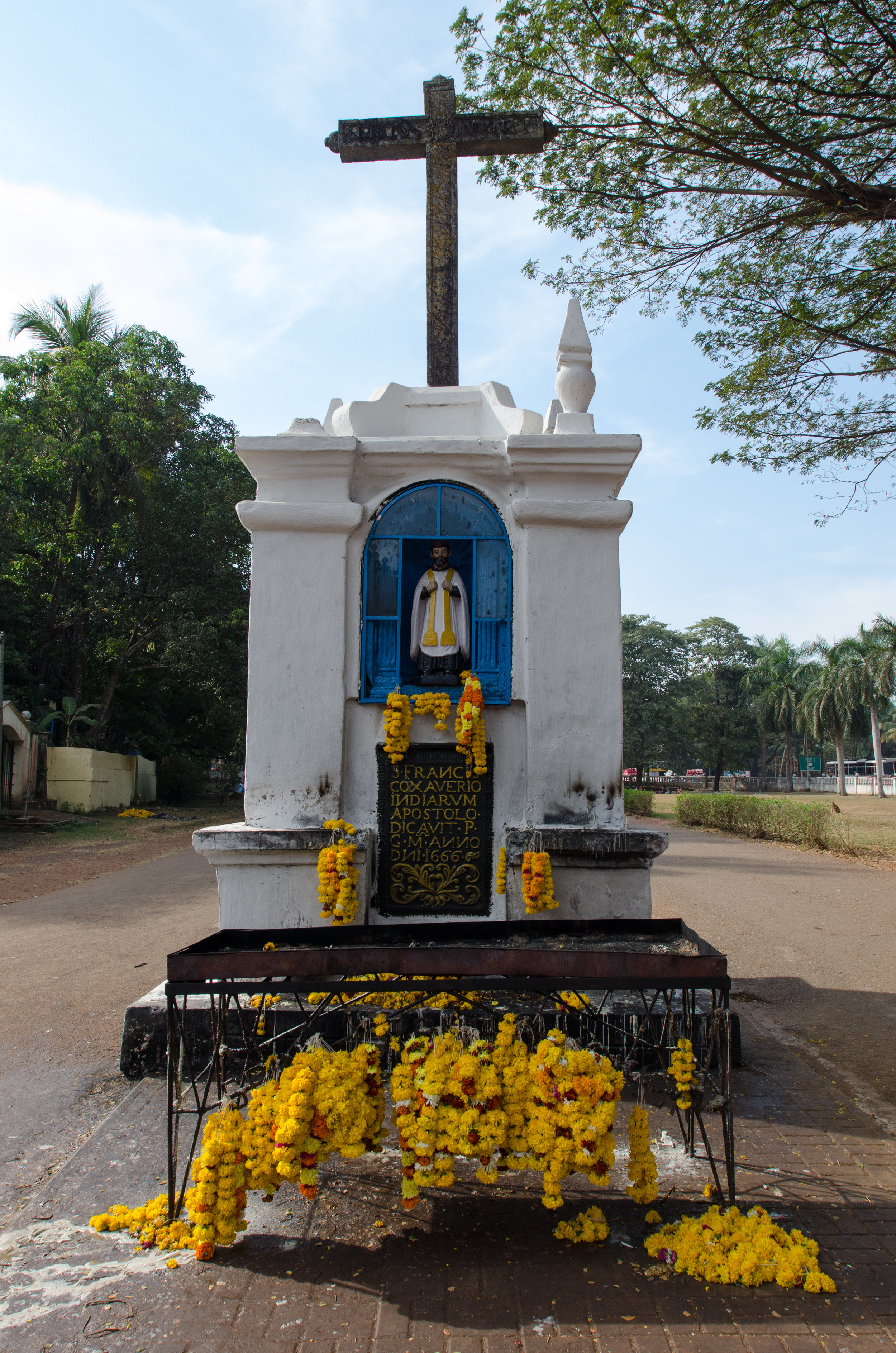

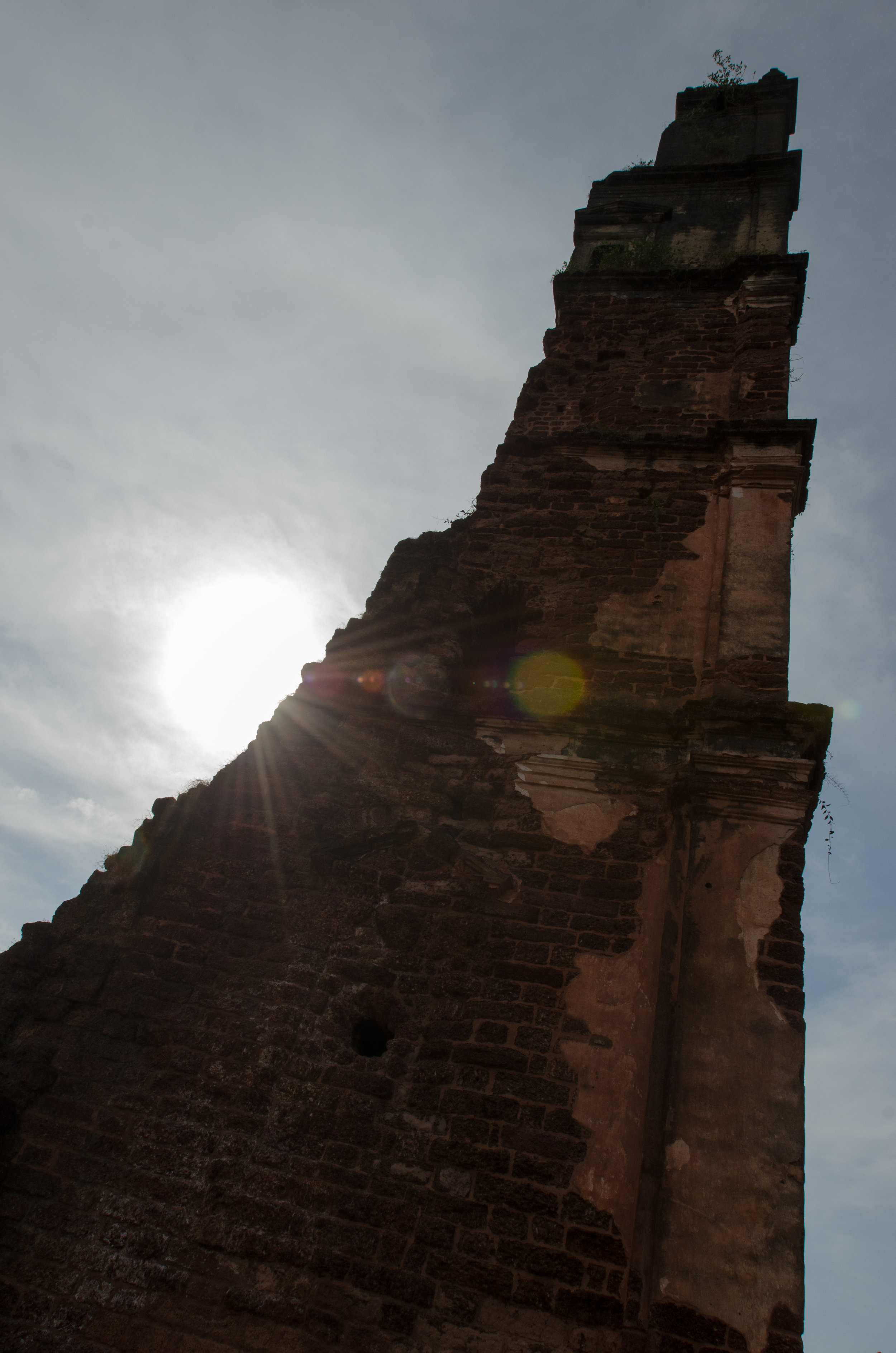
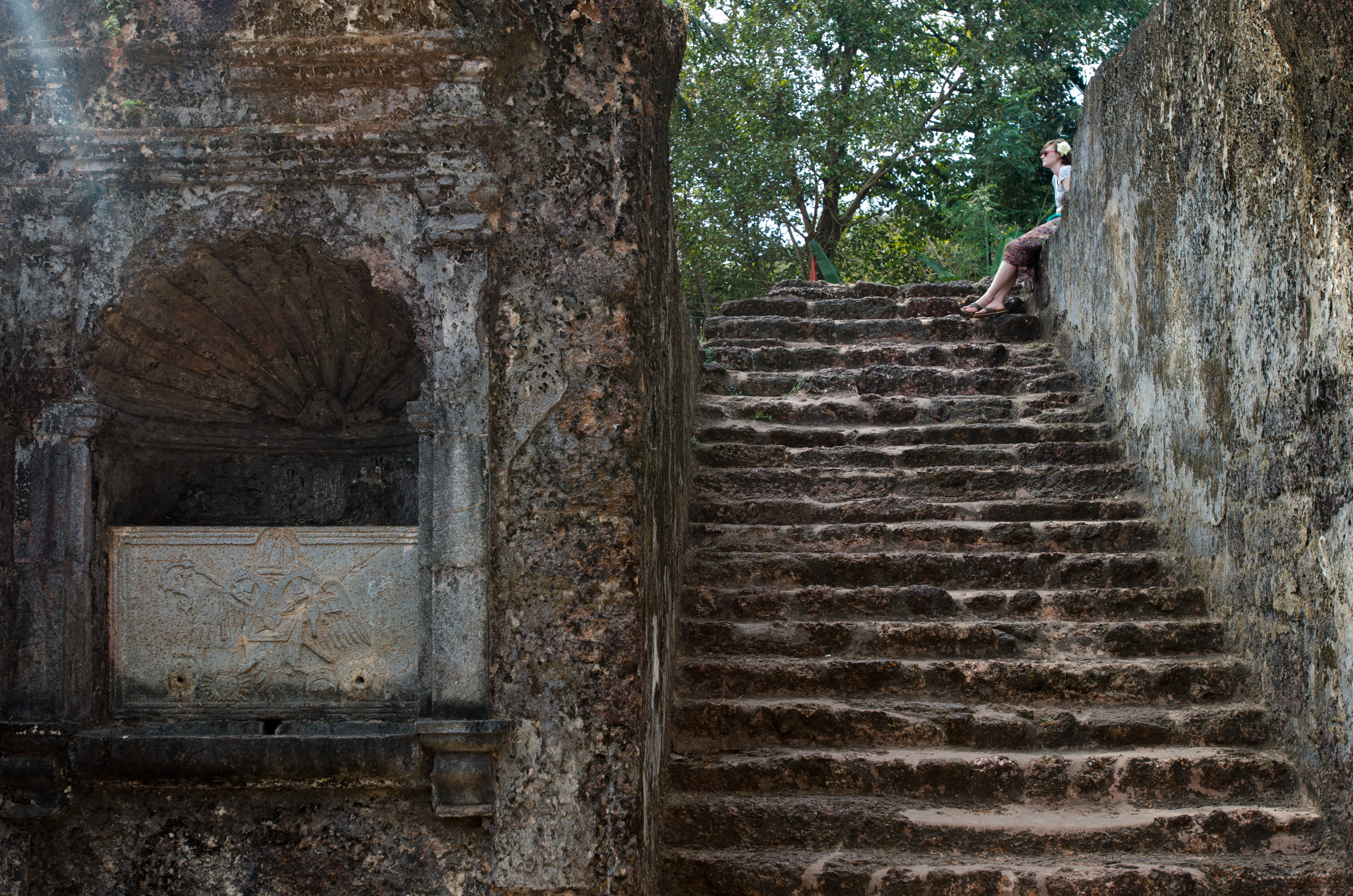
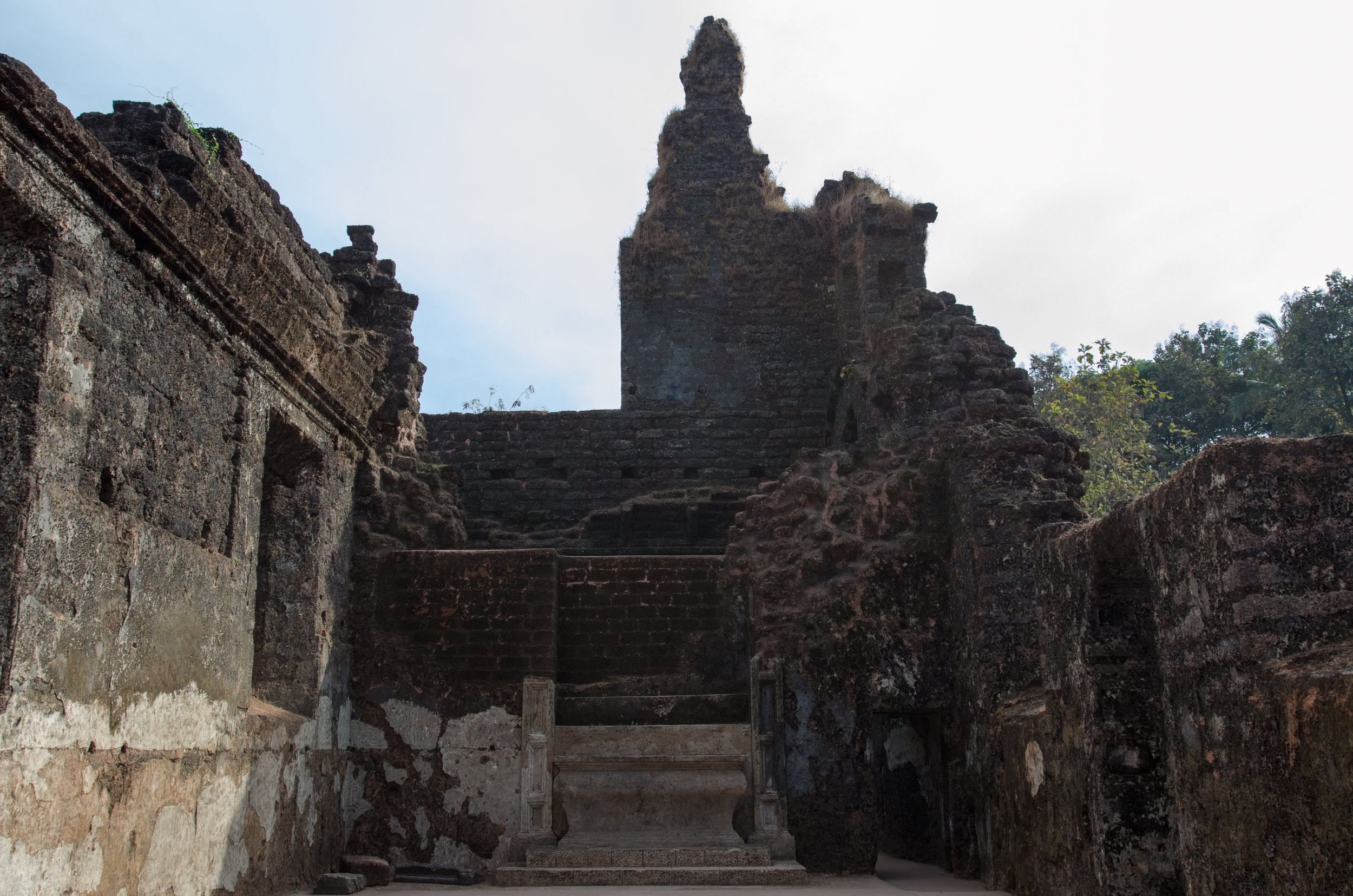


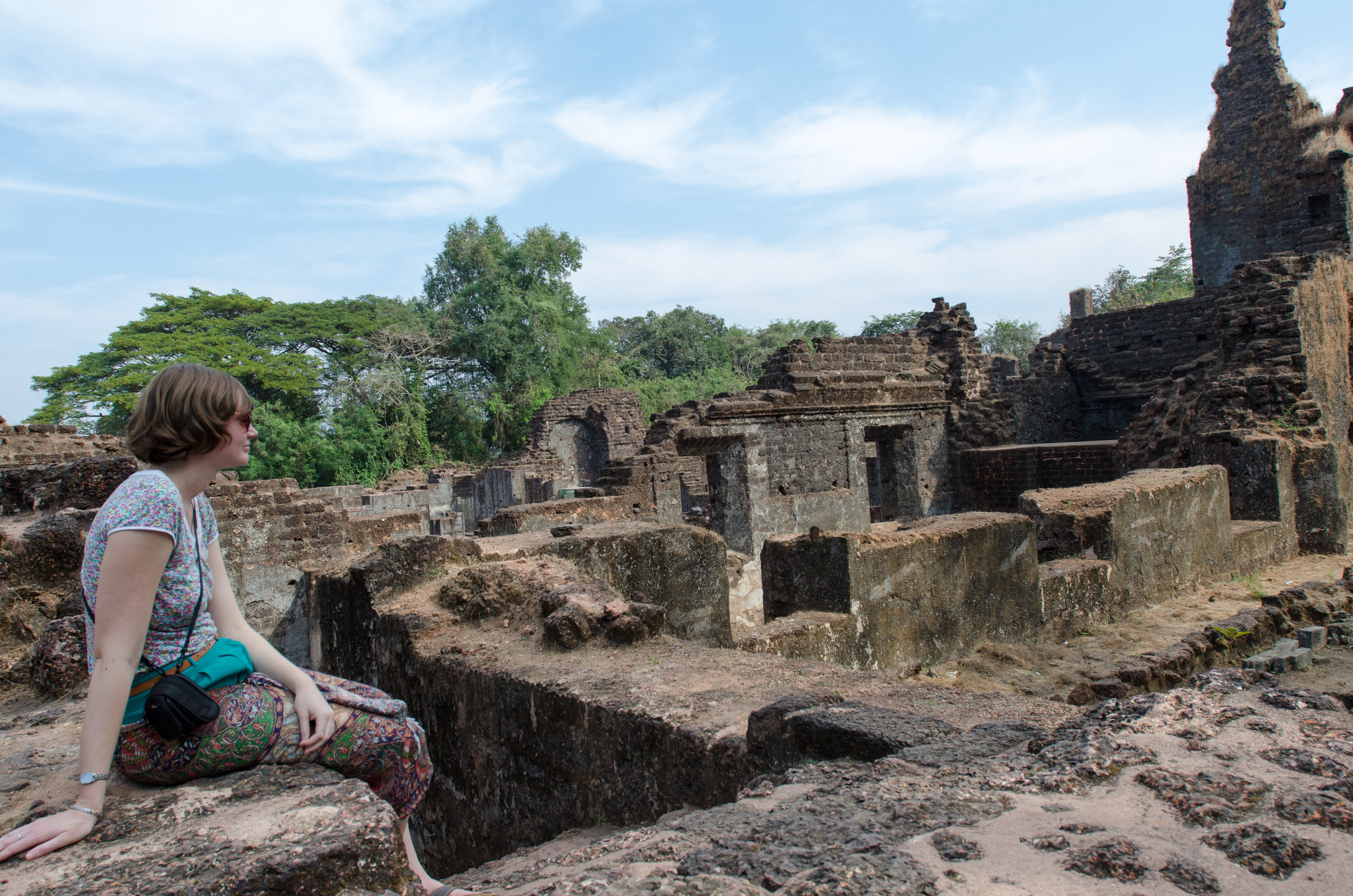
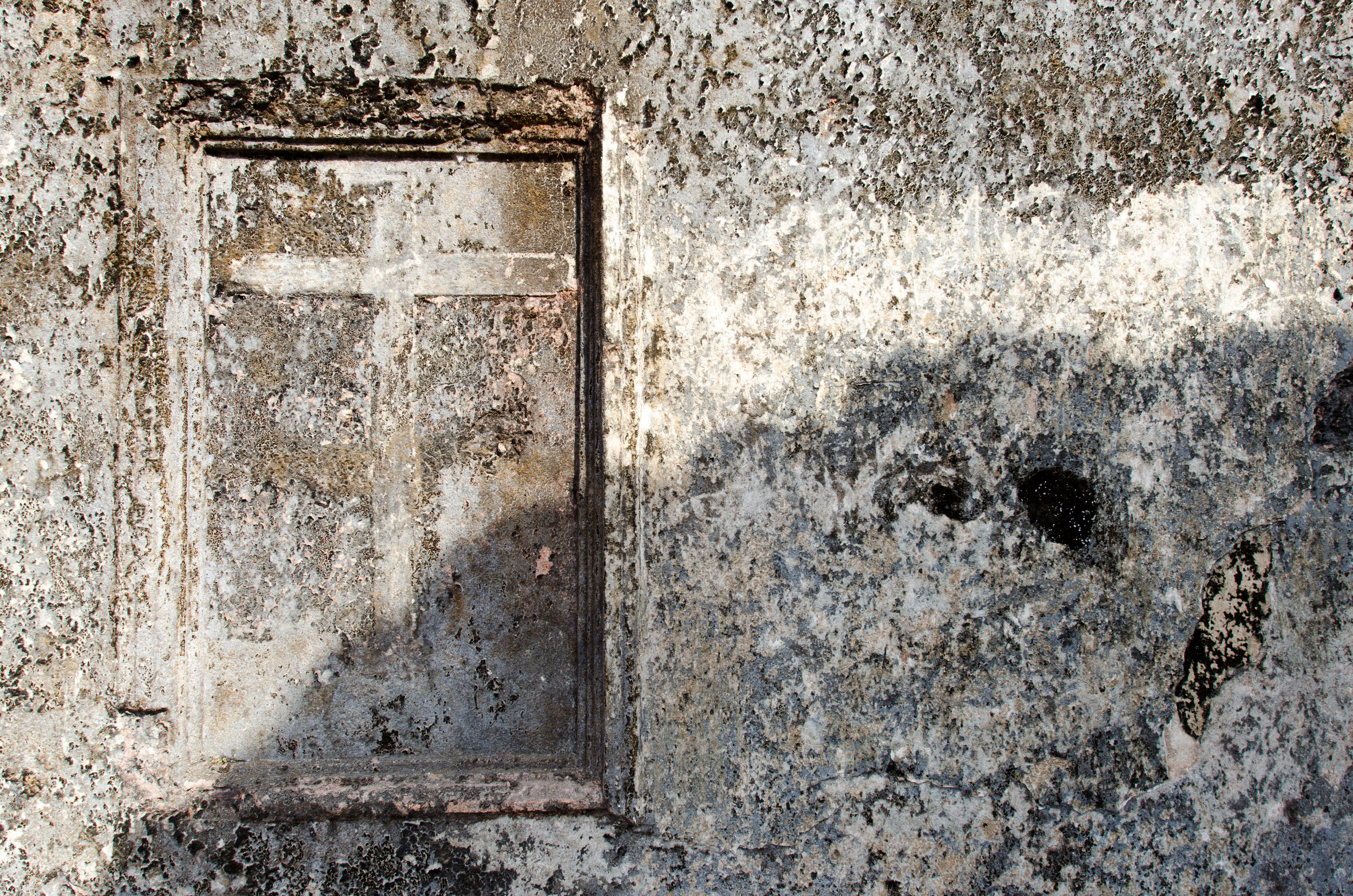
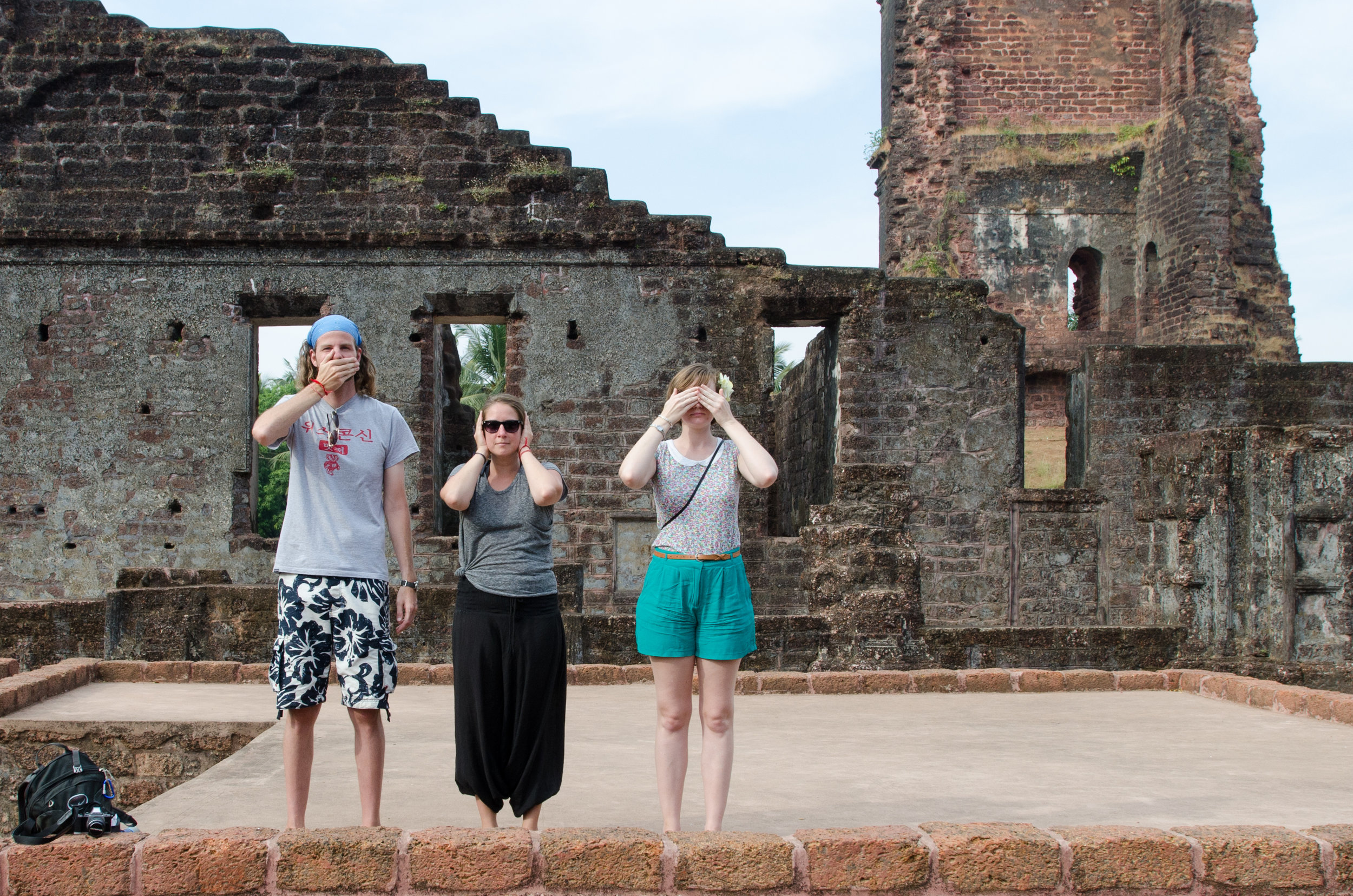

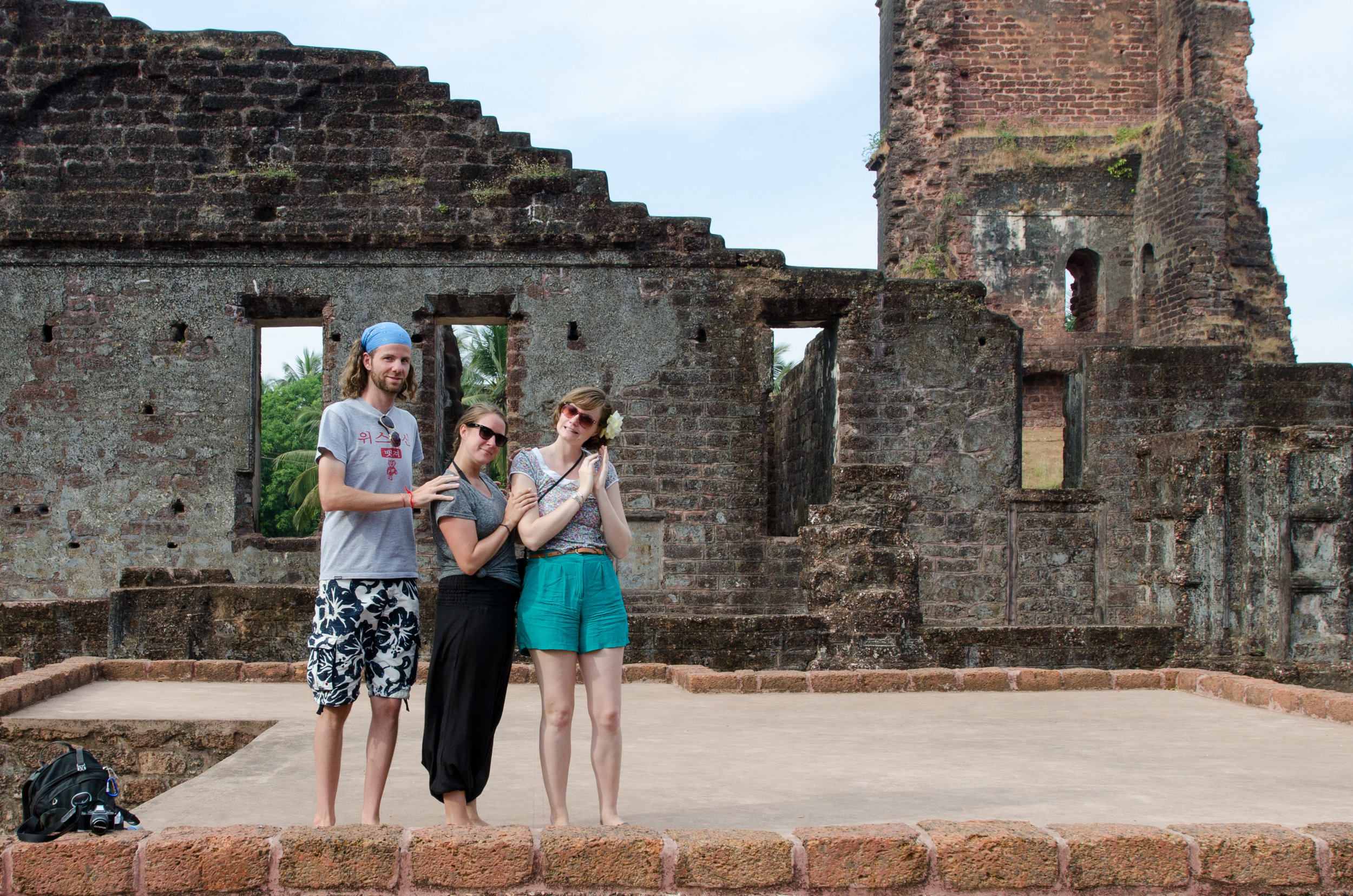
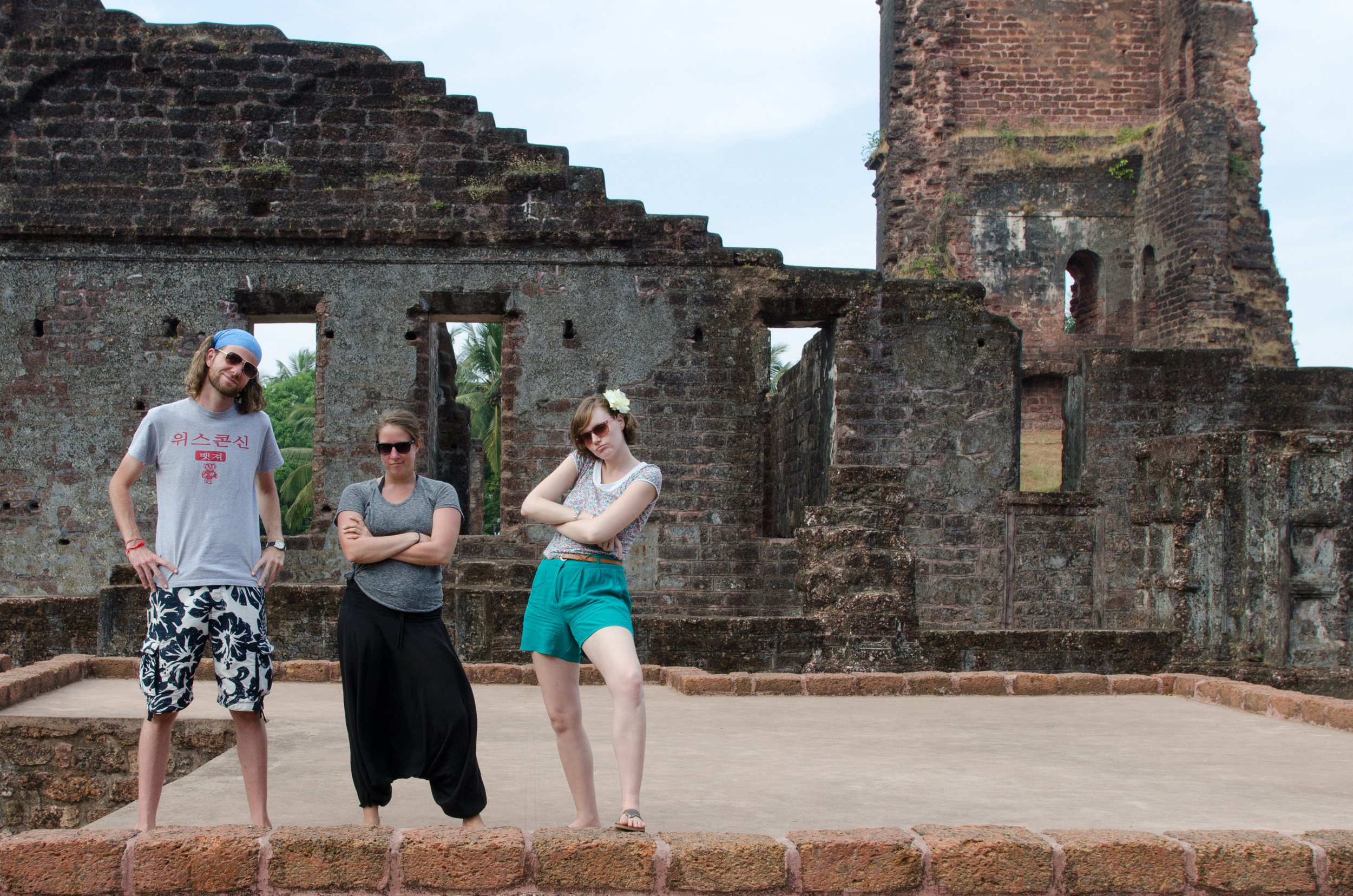
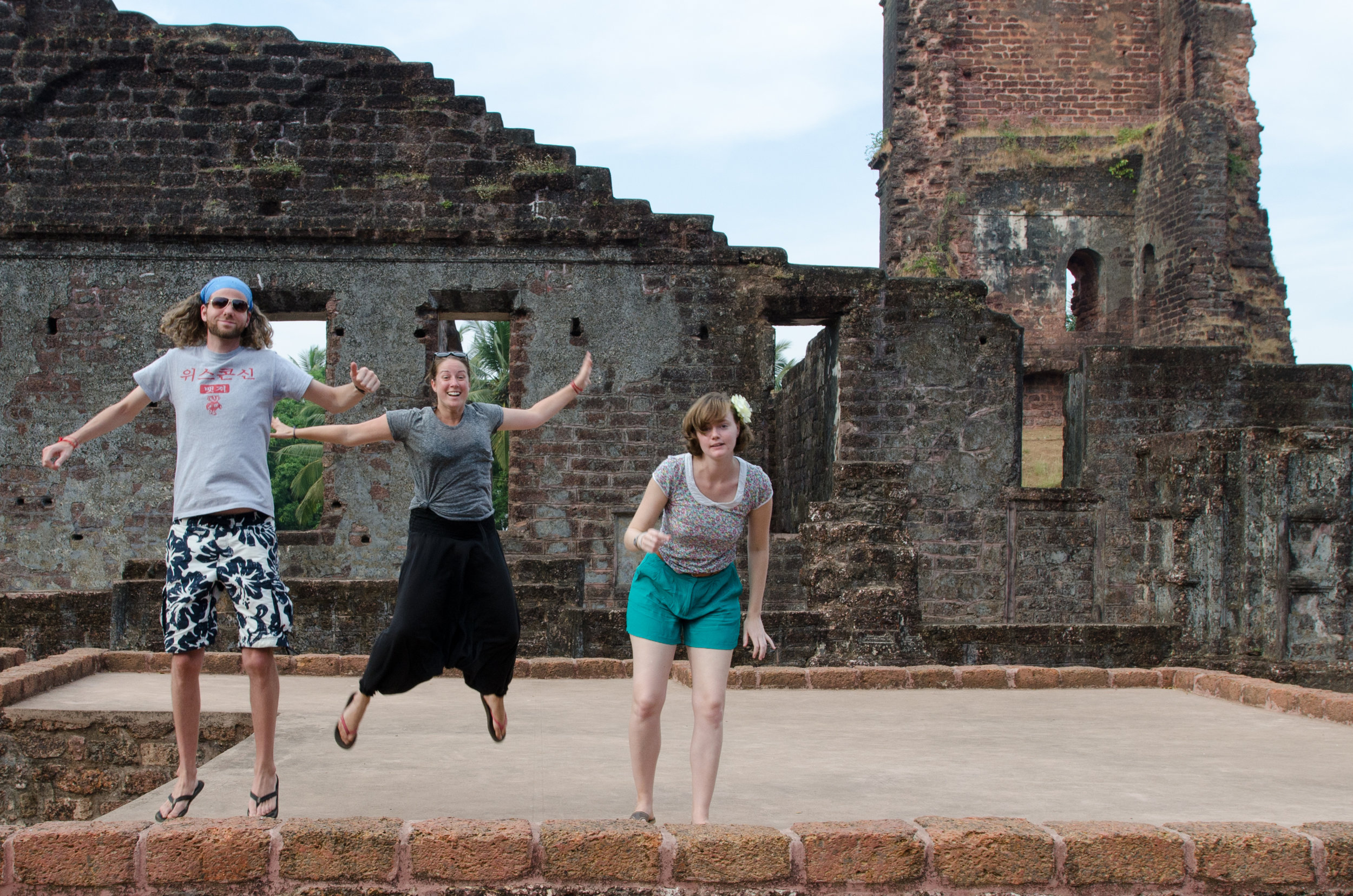
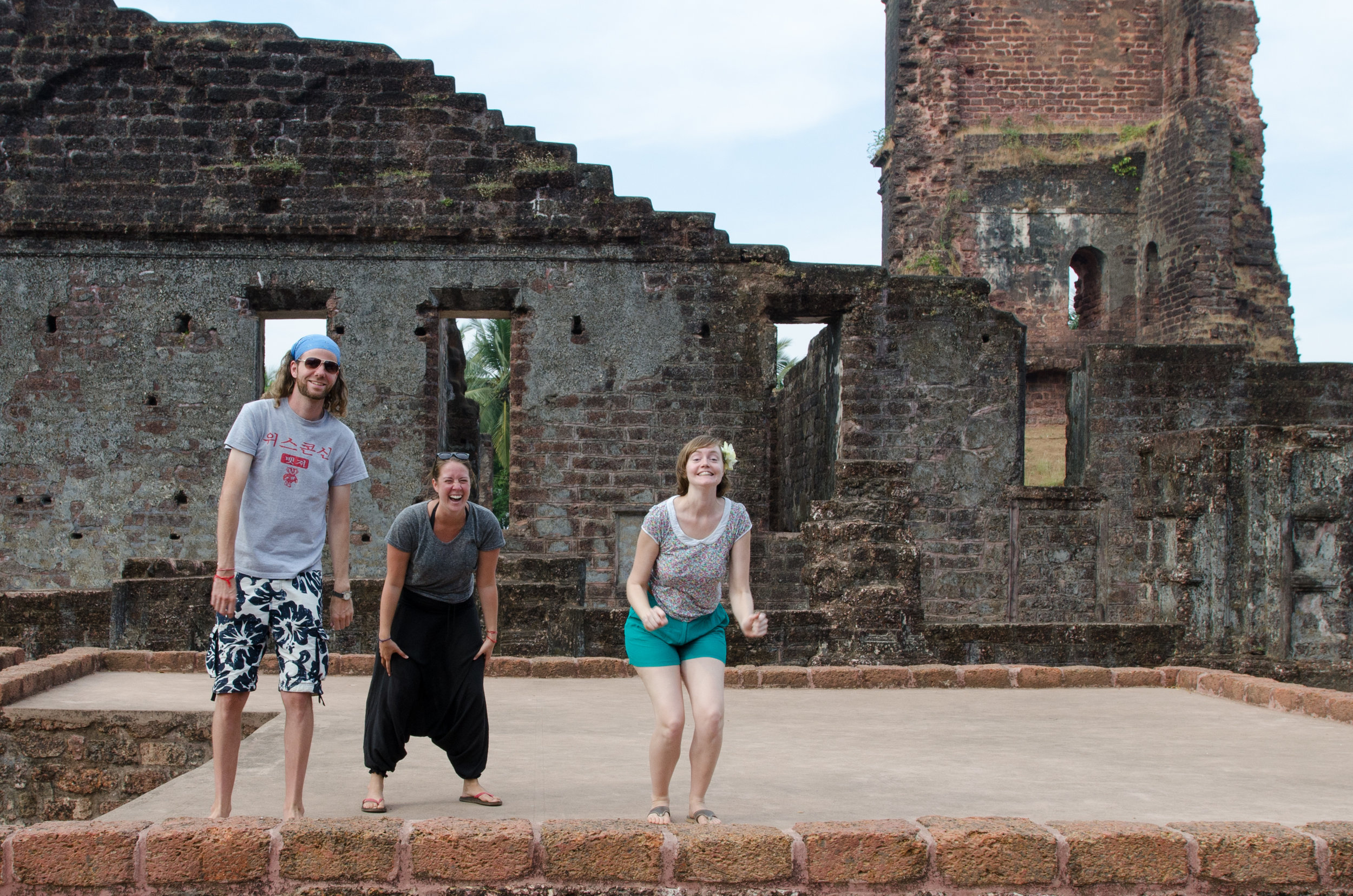
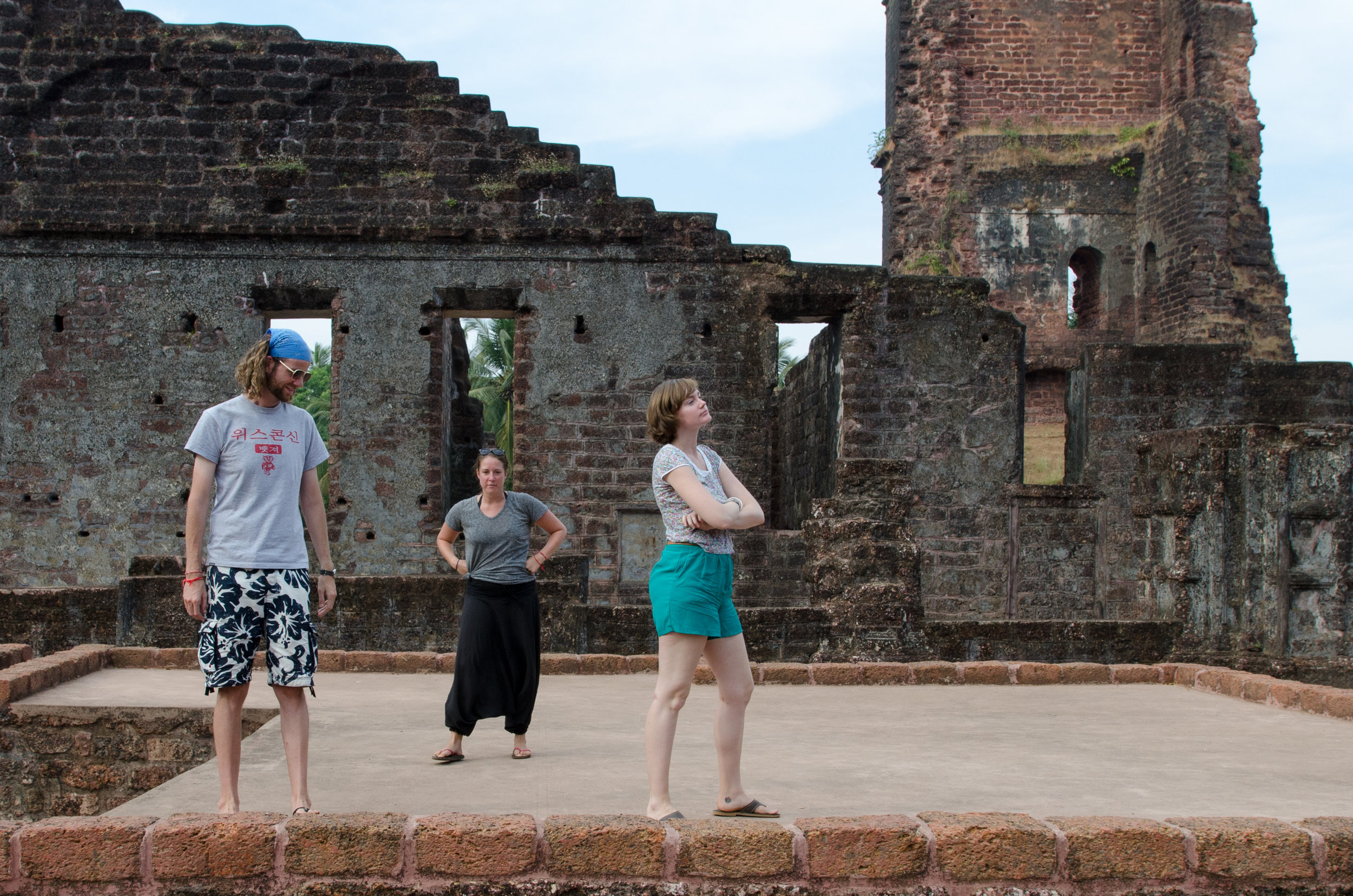
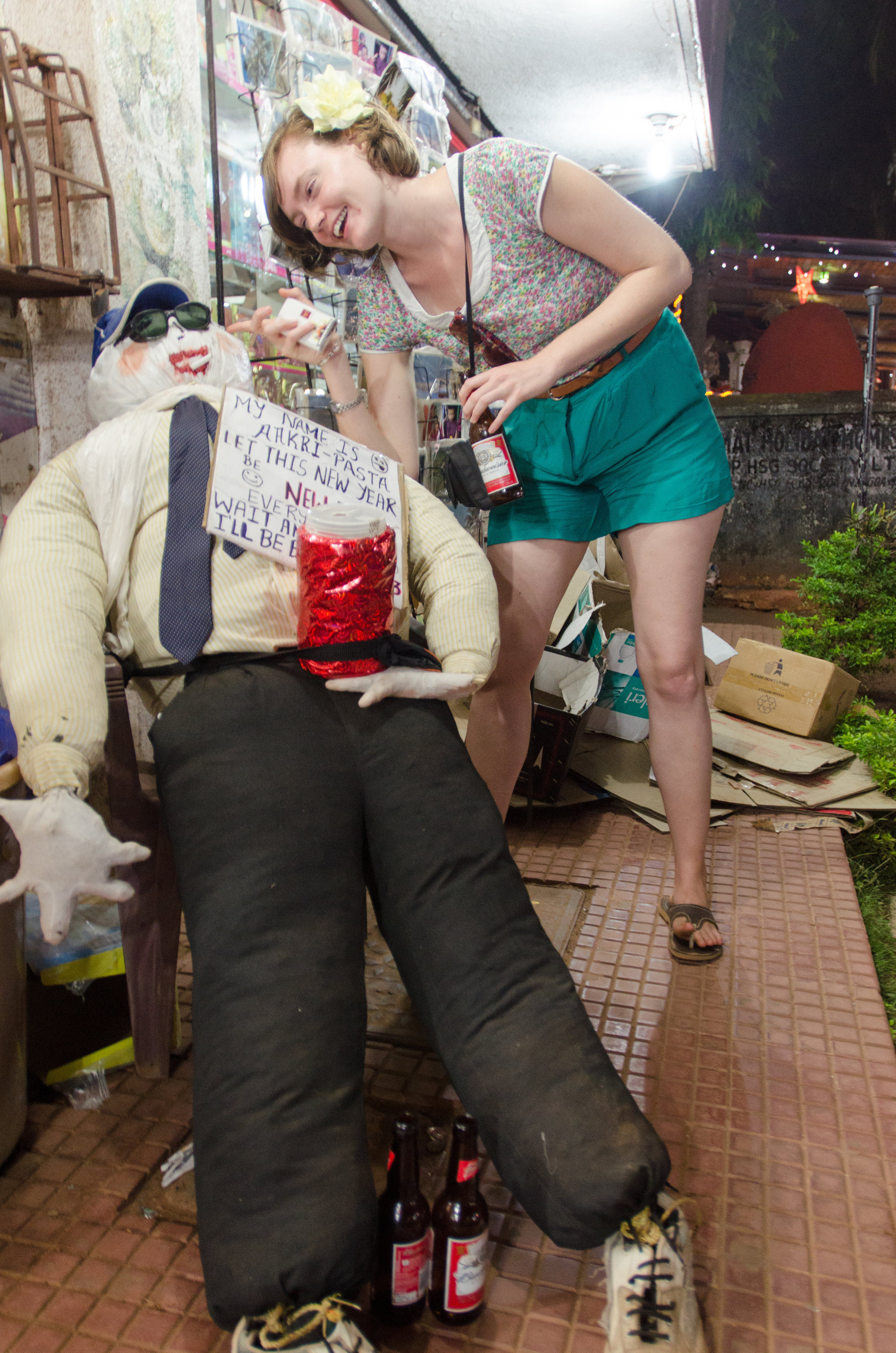
Built in 1861 by the Portugese (who had colonized Goa in the 15th century until a plague hit, and the city was abandoned in the 18th century), the Church of St. Francis of Assisi is a Roman Catholic Church featuring frescos of his life and a main alter dedicated to him, Jesus, and Saints Peter and Paul. Pews have been removed (when I’m not sure) and burial markers lie in their place. I’m not sure if I’ve ever been in a gutted out church like this before. It felt… empty, which is a shame, because the walls and side altars and the vastness of the church was all quite stunning.
The Basilica of Born Jesus is a short sprint down the road from the Church of St. Francis Assisi. It was completed in 1605, and is not only the first minor basilica in India, but it is also the best example of Baroque architecture in India. Although the facade is quite ornate, the interior wasn’t equally so, at least not the side walls of the church. However, it is a fully functioning church and held quite a few more people, pilgrims even, who had traveled to see the church, but more importantly to pay respects to the remains of St. Francis Xavier who is kept inside the Basilica.
Interesting, and slightly morbid, is that his body was originally buried on a beach in China, before being moved to Malacca for two years before again being exhumed and moved to Goa. It is said that his body was as “fresh” as it was the day he was buried in Malacca. A few pieces of his body have been removed to be put on display around the world- Rome, mostly. But the best story- again- story (I’m not entirely sure it’s true) is that a woman snuck into the church when his body was on display and bit off his toe. It is said that officials were able to track down who stole the toe from the trail of blood (from the toe) that led to her house. Crazy, right?!
His body is displayed every 10 years- the last display was in December of 2004, so only one more year and his body is scheduled to be displayed for your pilgrimage pleasure. Until then, his body is housed in a glass case inside of this tomb, below. There were so many tourists and pilgrims taking their picture in front of the tomb that I didn’t stay long and only snapped this photo as I walked out into a tiny museum like hall of religious paintings, his original casket (what a tiny person he must have been, because that box was not big at all!) and gift shop.
Our last stop in Old Goa was to see the ruins of the Church of St. Augustine. The ruins include a four story belfry tower, eight chapels, four altars, and an expansive convent. It was big. It was also quite fun to climb up and take in different views. Kate was my muse for the afternoon as we all went in different directions to explore, yet kept bumping back into each other at different turns.
And then, we played “scenario.” Scenario is a game that one of my favorite people in the world taught me. (Hi, Lindsay!) To play, you shout out an emotion or a place or activity and you act it out instead of just smiling or dropping a peace sign (like you do in Korea).
When we got back to Calangute, I made Kate pose with the New Year ‘Old Man.’ We saw quite a few of these ‘old men’ around town and from my understanding- a man is made for good luck for the new year. Each man holds a bucket asking for donations- which, if you donate something, you get good luck as well? And then on New Year’s Eve, the man is burned, allowing you to have a fresh start for the new year, but will return next year to take away your misgivings or bad deeds or something like that. (We asked about this to different people three different times, and the answers were a little confusing. Basically. It’s a tradition. For the New Year. For luck. Is probably the simplest, most straightforward interpretation of it all.)
